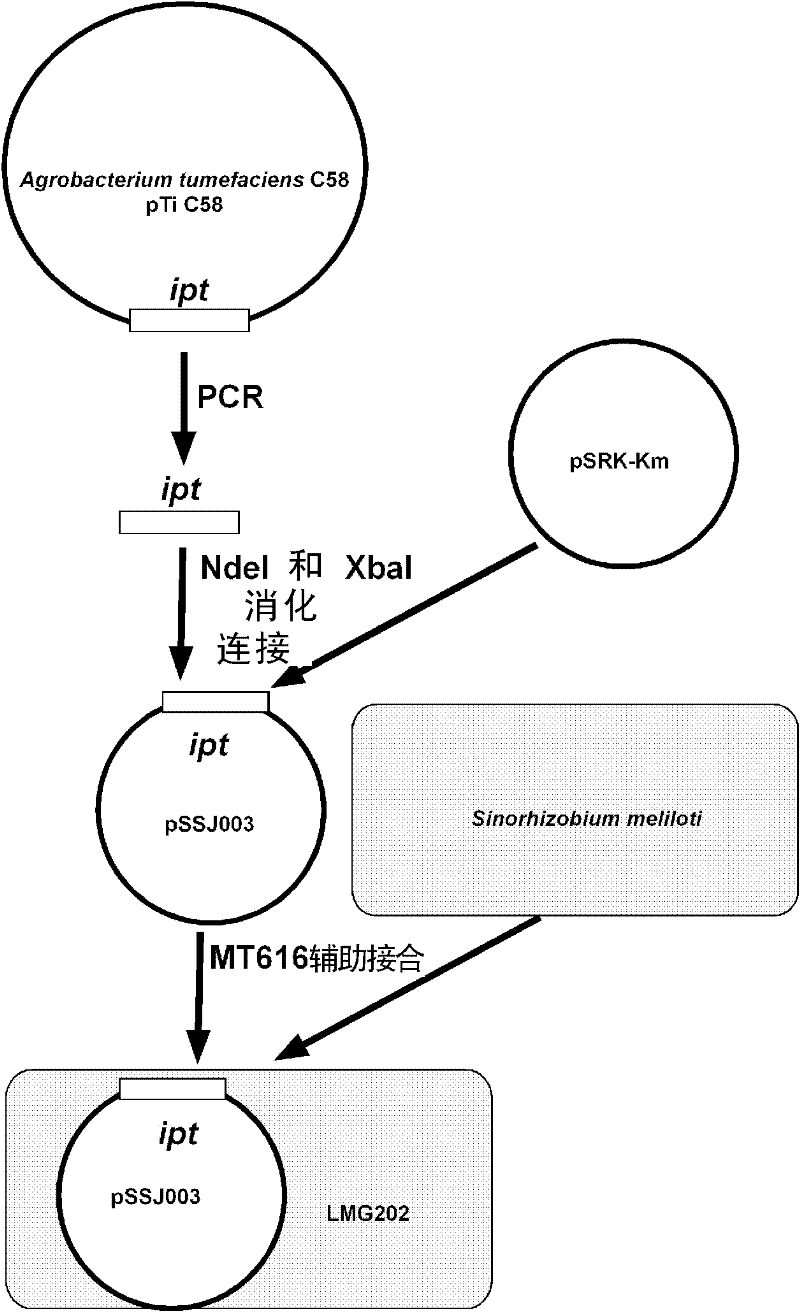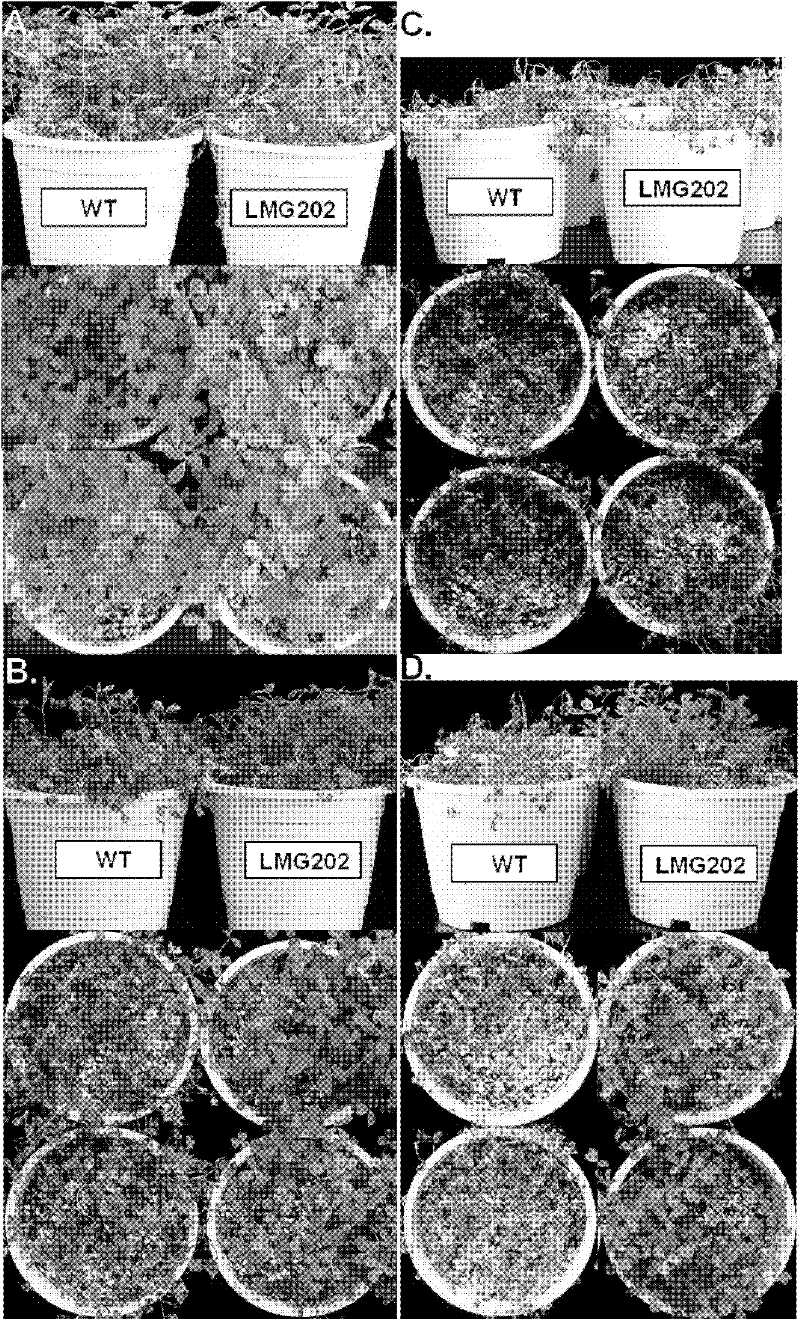Method for changing characteristics of plants
A plant trait and plant technology, applied in the fields of biotechnology and botany, can solve the problems of restricting the improvement of leguminous crop varieties, difficulty in obtaining transgenic plants, and health effects
- Summary
- Abstract
- Description
- Claims
- Application Information
AI Technical Summary
Problems solved by technology
Method used
Image
Examples
Embodiment approach
[0063] As an embodiment of the present invention, the source gene is prenyltransferase gene. Isopentenyltransferase (IPT) is a catalytic enzyme that can guide the synthesis of cytokinins, participates in the regulation of plant development, morphology and physiological processes, and plays an important role in regulating the levels of cytokinins in plant tissues. Its amino acid sequence is shown in GenBank accession number AAK90970.2; its coding gene sequence is shown in GenBank accession number AE007871.2.
[0064] The isopentenyl transferase can synthesize plant cytokinins in rhizobia, especially trans-zeatin, and the trans-zeatin (a small molecule) is a kind of cytokinin, which can regulate cell division And affect a variety of developmental events, such as shoot development, sink strength, root branching, control of shoot apical dominance, leaf development, chloroplast development, and leaf senescence.
[0065] Other exogenous genes that can be used include but are not li...
Embodiment 1
[0116] Embodiment 1, the construction of the rhizobia meliloti engineering bacteria expressing isopentenyl transferase
[0117] Design a pair of oligonucleotide primers targeting the reading frame of the Agrobacterium tumefaciens prenyltransferase gene, the sequence is as follows: forward: 5'-GCTCATATGTTACTCCATCTCATCTACGG-3', and reverse: 5'-CAGTCTAGAGTGCAATACTTGTAACAGGATCCGTAG-3 '.
[0118] Taking Agrobacterium tumefaciens C58 pTiC58 (see Danhorn T, Hentzer M, Givskov M, Parsek MR, Fuqua C. Phosphorus limitation enhances biotilm formation of the plant pathogen Agrobacterium tumefaciens thr
Embodiment 2
[0119] Embodiment 2, the effect of rhizobia engineering bacteria LMG202 on the formation of alfalfa nitrogen-fixing root nodules
[0120] After surface disinfection of alfalfa (Medicago sativa Shangdong, purchased from Shandong Academy of Agricultural Sciences) seeds, rhizobium LMG202 (containing 10 8 Rhizobia / ml) were mixed together and soaked for 0.5 hours, then sowed in sterilized artificial soil of perlite, placed in an artificial climate chamber to germinate and grow until the fourth week, discarded the artificial soil, washed the plants, and observed The number of nodules was counted, and nitrogenase activity was determined. Alfalfa inoculated with an empty vector (Sinorhizobium meliloti Rm 1021 / pvector) was used as a control.
[0121] The method for measuring nitrogenase activity is as follows: collect 10 alfalfa roots (below the cotyledons), put them in a 10-ml glass bottle, cover the bottle tightly, inject 1 ml of acetylene with a syringe, react at 28°C for 30 minute...
PUM
 Login to View More
Login to View More Abstract
Description
Claims
Application Information
 Login to View More
Login to View More - R&D
- Intellectual Property
- Life Sciences
- Materials
- Tech Scout
- Unparalleled Data Quality
- Higher Quality Content
- 60% Fewer Hallucinations
Browse by: Latest US Patents, China's latest patents, Technical Efficacy Thesaurus, Application Domain, Technology Topic, Popular Technical Reports.
© 2025 PatSnap. All rights reserved.Legal|Privacy policy|Modern Slavery Act Transparency Statement|Sitemap|About US| Contact US: help@patsnap.com



